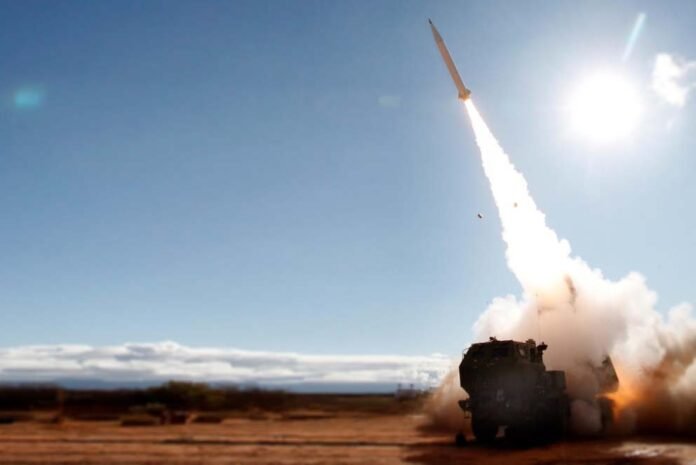Washington: In a first, the US Army and Lockheed Martin fired two new Precision Strike Missiles, or PrSMs, in a salvo test shot as part of production qualification flight testing at White Sands Missile Range, New Mexico, Lockheed announced.
The testing proved PrSM’s capability to be fired one after another from the M142 High Mobility Artillery Rocket System, or HIMARS, launcher, per Army doctrine that requires two missiles to be fired at a target in operations in order to effectively guarantee hitting an incoming threat target.
Additionally, the test included having an operator in the cab to prove out soldier safety requirements during firing for the first time.
The two PrSM missiles “in a mid-range flight against a target set” were able to prove “accuracy and readiness,” Lockheed said.
The first set of PrSMs was delivered to the Army in December 2023 to begin replacing the legacy Army Tactical Missile System.
The missile — which can launch from both the HIMARS and the M270A2 Multiple Launch Rocket System — will be critical to the service as it seeks a deep-strike capability that can counter Russian and Chinese technologies. Both European- and Indo-Pacific-based US commanders have been eager to receive the capability that can hit targets at standoff locations greater than 400 kilometres.
This summer, the Army fired its PrSM from the Pacific island of Palau and engaged a moving target at sea, marking the first time the weapon had been used outside of American-based testing sites.
The Army is planning capability improvements in subsequent increments, including an enhanced seeker to better defeat moving targets at sea as well as technology to provide increased lethality and extended range. The priority for the PrSM in the near term is to pursue a maritime, ship-killing capability.
Lockheed and an RTX and Northrop Grumman team will compete to develop a subsequent increment called the Long-Range Manoeuvrable Fires program, which focuses on dramatically extending the range of the missile, possibly from its planned 499 kilometres to more than double that distance.
America’s 2019 withdrawal from the Intermediate-Range Nuclear Forces Treaty with Russia has allowed the Army to develop the missile to fly farther. The treaty prevented the development of missiles with ranges between 499 kilometres and 5,000 kilometres.
In October 2021, the Army conducted a long-range flight test of PrSM that is believed to have exceeded the current range requirement of 499 kilometres.
The Army and Lockheed have several more tests lined up, and the service will begin user testing in December. The service is expected to reach a production decision for the first PrSM variant by the end of 2025.
Raksha Anirveda's editorial desk team brings in the collective experience of creative professionals - a fine mix of senior copy editors, writers, proofreaders and designers. Working as a team, they continuously create, manage, and curate content to sustain the magazine's profile and reputation in line with market trends and achieve magazine's goal.





